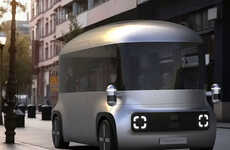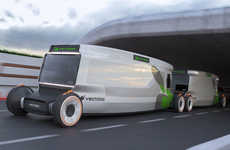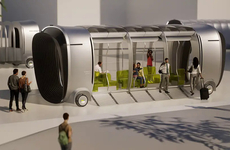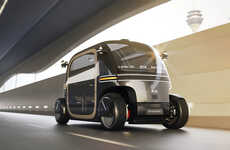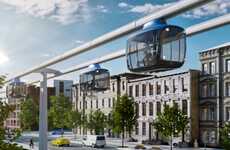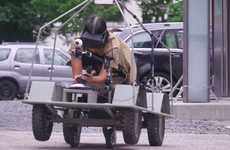
This Autonomous Bus Concept is Accommodating, Adaptable and Efficient
Amelia Roblin — October 9, 2017 — Autos
References: behance.net & yankodesign
Urban mass transportation hasn't changed a great deal in the past 100 years, and while this autonomous bus doesn't initially seem to be too much of a leap, it would greatly improve the flow of commuters from A to B.
It isn't on tracks, but this driverless shuttle honors its route like a traditional tram. The coach takes cues from the train with a modular body, capable of being extended at peak hours of the workday. Inspiration for the Altern autonomous bus is taken from all types of city vehicles, as well as the latest in smart technology. This concept by Mikolaj Nicer, and fellow students, has large screens to display route and stop information, as well as color-coded digital bars over the doors to demonstrate which sections have available seats or not.
It isn't on tracks, but this driverless shuttle honors its route like a traditional tram. The coach takes cues from the train with a modular body, capable of being extended at peak hours of the workday. Inspiration for the Altern autonomous bus is taken from all types of city vehicles, as well as the latest in smart technology. This concept by Mikolaj Nicer, and fellow students, has large screens to display route and stop information, as well as color-coded digital bars over the doors to demonstrate which sections have available seats or not.
Trend Themes
1. Modular Autonomy - Developing autonomous transportation solutions with modularity features to improve mass transit efficiency and scalability.
2. Smart Transit Technology - Incorporating advanced technology like digital displays and sensors to enhance public transportation rider experience.
3. Dynamic Flexibility - Designing public transit solutions with the ability to adapt and change based on commuter demand, safety and accessibility.
Industry Implications
1. Public Transit - Opportunities exist to provide innovative solutions for mass transit systems that enable greater efficiency, safety and convenience.
2. Autonomous Vehicles - Developing modular autonomy features for public transit could lead to advancements in autonomous vehicle technology and infrastructure.
3. Smart City Technology - Integrating smart transit technology into a larger smart city framework can lead to more efficient and connected urban environments.
5
Score
Popularity
Activity
Freshness

